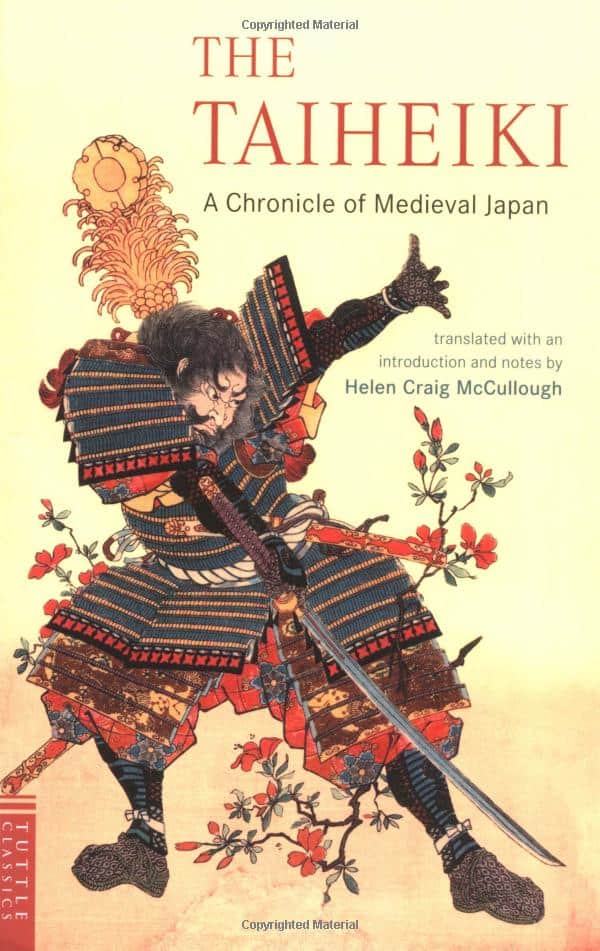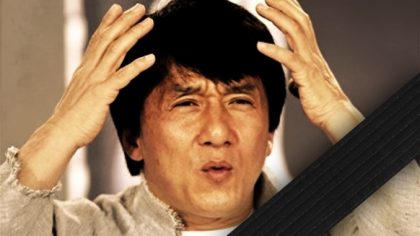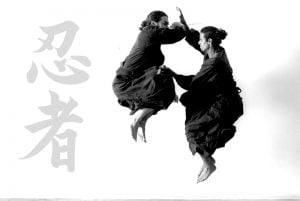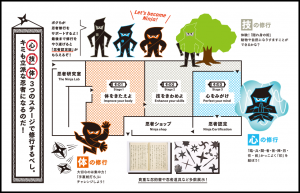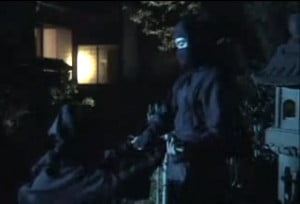Looking for a martial arts school that teaches authentic or real ninjutsu? Historical ninjutsu was NOT a martial art system.
Besides, what exactly do you mean by “authentic” or “real”? Ninjutsu training that’s historically accurate? A school that has a proven lineage to a historical ninja clan?
Confused by these statements and questions yet?
Controversy over present-day Ninjutsu
Modern-day ninjutsu is a topic filled with controversy and heated arguments. Forget about checking martial art forums to look for direction. This video on repeat sums up what you will find.
Instead, let’s make sense of the issue and then, decide if you can learn ninjutsu of the historical shinobi.
So, what’s the problem?
All arguments over modern-day Ninjutsu schools boil down to legitimacy; is Ninjutsu today real, authentic or true?
Issues with legitimacy can be split into three levels. Does a Ninjutsu school have…
- Proven historical lineage to a clan?
- Historical accuracy in its syllabus?
- Recognition and respect by peers, publications, organisations and researchers in its industry?
Each level of legitimacy bolsters an organisation’s perceived reputation and sense of purpose.
Because of the complexity of this issue, here is an outline of what this article covers.
Ninjutsu Schools: The 4 “Last Ninja”
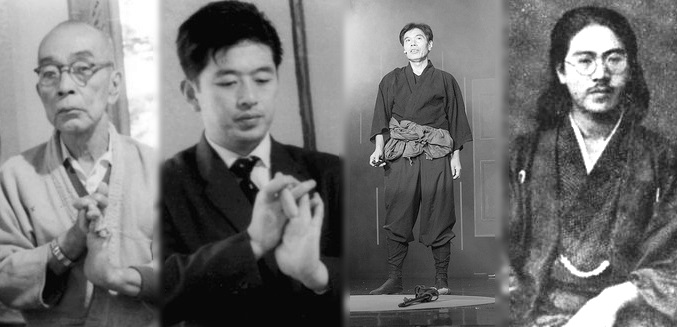
The four last ninja are people thought to hold a master-student lineage to actual ninja clans. They are Seiko Fujita, Toshitsugu Takamatsu, Masaaki Hatsumi and Jinichi Kawakami.
Seiko Fujita (1898 – 1966) – No Ninjutsu School

Seiko Fujita was a martial artist and budo researcher who wrote extensively about Japanese martial arts and ninjutsu. He was also bujutsu instructor for various police departments.
As a professional martial artist, Seiko Fujita was well-connected to many famous names including Kenwa Mabuni (founder of Shoto-ryu Karate) and Motobu Choki. President Kisho Inoue of The Society for the Promotion and Preservation of Ryukyu Kobudo, spoke favourably about Fujita in an interview.
Although believed to be the last Soke of Wada-Ha Koga-ryu Ninjutsu, Fujita’s historical lineage has not been proven. However, he did a lecture about ninjutsu at the Nakano Military Intelligence Academy, supported by source documents from the academy.
Assuming that his lineage is historically authentic, he has never appointed a successor. He explicitly stated this in his book. There is also no evidence that he taught partial Ninjutsu knowledge to anyone.
Any Ninjutsu lineage claims linked to Seiko Fujita or Wada-Ha Koga-ryu should be regarded with suspicion.
Toshitsugu Takamatsu (1889 – 1972) – Ninjutsu Lineage
Toshitsugu Takamatsu was a martial artist said to have been trained and received menkyo kaiden (complete transmission licence) in several martial arts. His legendary exploits include going to China to test his abilities at the age of 20.
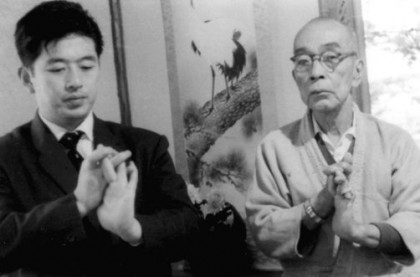
Some of the lineages were passed down to Maasaki Hatsumi and Ueno Takashi.
Maasaki Hatsumi (1931 – present) – Bujinkan & descendant organisations
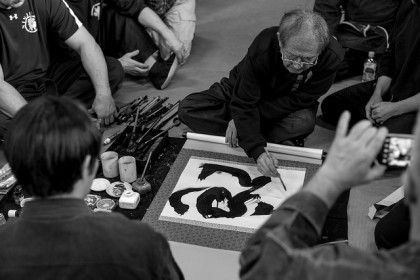
Masaaki Hatsumi is a martial artist who trained – not only in the lineages of Toshitsuga Takamatsu – but in Shito-ryu karate, Judo and Aikido. Other than his profession as a bonesetter, he was a writer for a magazine and also a martial arts film advisor to a number of movies.
Praised by Black Belt Magazine as a hands-on and approachable instructor, Hatsumi was awarded Instructor of the Year in 1986. He also received the International Culture Award by Japan Cultural Promoting Association. This award is physically presented by the Imperial family, and it recognises his achievement on promoting Japanese culture overseas.
Bujinkan Budo Taijutsu
Masaaki Hatsumi holds the nine lineages under the Bujinkan Budo Taijutsu organisation, which was passed to him from Toshitsugu Takamatsu. Of the nine, the first three are Ninjutsu lineages, while the rest are samurai lineages.
- Togakure-ryu Ninpo Taijutsu
- Gyokushin-ryu Ninpo
- Kumogakure-ryu Ninpo
- Gyokko-ryu Kosshijutsu
- Kuki Shinden Happo Bikenjutsu
- Koto-ryu Koppojutsu
- Shinden Fudo Ryu Dakentaijutsu
- Takagi Yoshin-ryu Jutaijutsu
- Gikan-ryu Koppo-jutsu
These are some notable organisations that have descended from the Bujinkan:
- Genbukan (founder also trained with Takamatsu)
- Jissen Kobudo Jinenkan (founder holds several menkyo kaiden from Bujinkan)
- To-Shin Do (Shadows of Iga Society / Quest Centers founded by Stephen Hayes)
- AKBAN (based in Israel – highly evolved training includes firearms)
Jinichi Kawakami (1949 – present) – Banke Shinobinoden
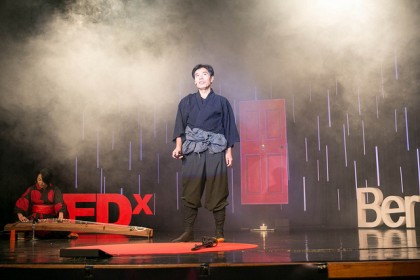
Jinichi Kawakami is the honorary director of the Iga Ninja Museum and a professor at Mie University researching the history of ninja. He claims lineage to the Ban clan’s ninjutsu from Masazo Ishida.
Banke Shinobinoden
He runs a Ninjutsu organisation called the Banke Shinobinoden, operating in Japan. He has authorised only one overseas dojo located in Spain, who is represented by José Defez. But there are several study groups in countries like
Shinobi-no-jutsu syllabus (Ninjutsu schools)
- Koka Shinobi-no-den (Akutagawa-ryu Ninjutsu is part of this)
- Iga Shinobi-no-den
- Tanba Murakumo-ryu Shinobi-no-hou
- Nanboku-ryu Gumpou
Bujutsu schools (martial arts schools)
- Shinden Fudo-ryu Kiho
- Ichijyo ho Koppo-jutsu
- Jyosui-ryu Shintogunden
- Sankato-ryu Yoroidoshi Kumiuchi-den
- Izumo Shin-ryu Heiho
- Shinken Muso-ryu Gun-jutsu
- Awaka Chiden-ryu Kama-jutsu
- Takenouchi-ryu Koroshi Atemi-no-den
Historical Lineage
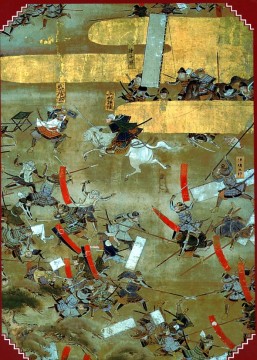
Here’s a simplified explanation of verifying historical lineage.
When proving historical lineage, the Soke (headmaster) has to verify its existence and transmission with proper records. These records must stand up to independent and rigorous scrutiny.
For instance, third-party evidence – such as family scrolls – will be checked to verify if the school and its individual masters exist in history. Transmission of martial knowledge from master to student will also be verified. Otherwise, anyone can buy a martial arts scroll and claim to be its master.
As such, a statement like “the lineages are authentic because my master says so” does not qualify as evidence. Any extraordinary claim, as mentioned in this article about ninja history, must have compelling evidence to back them.
Of course, having no evidence for a claim doesn’t make it fake. It just means it cannot be proven.
Acknowledged by the living “last ninja”
The historical lineage of the Ninjutsu schools in both Bujinkan and Banke Shinobinoden has not been verified.
Masaaki Hatsumi himself has admitted, “there is not much documentary evidence for any of this, besides the surviving scrolls that outline the basic techniques” in this CNN Travel coverage. Likewise, Japan Times interviewed Jininchi Kawami and stated that “no one knows anything about Ishida”, his master.
Koryu vs gendai martial art

Koryu bujutsu are old japanese martial arts that can trace its master-student lineage to before the Meiji restoration period (roughly 1868). This is, again, a simplistic definition. Gendai budo, on the other hand, are japanese martial arts that are founded after.
Ninjutsu-derived martial arts are not koryu bujutsu. Firstly, neither the Nihon Kobudo Shinkokai nor Nihon Kobudo Kyokai (two reputable organisations for koryu in Japan) recognise any Ninjutsu lineages.
Secondly, Diane Skoss, an expert on koryu classification and also menkyo kaiden holder for Shinto Muso-ryu jo, stated the following about Ninjutsu: “the art and those derived from it do not fall into our definition of the koryu bujutsu”.
Note: One of the obsessions of the martial arts world is historical martial arts (koryu). But modern ones are no less effective. Examples of gendai budo include Judo and Aikido.
Bugei Ryuha Daijiten
The Bugei Ryuha Daijiten is a highly-regarded comprehensive Japanese encyclopedia of historical martial arts. In the 1963 version, it mentions Toshitsuga Takamatsu and Togakure-ryu. This means Togakure-ryu can at least be traced to Takamatsu’s time. However, the author remarks that there are questionable inconsistencies in the Togakure-ryu lineage.
To the best of my knowledge, it says nothing about the Banke Shinobinoden. Please correct me, with supporting documents, if I’m mistaken.
Oral tradition might have been the reason for the absence of records, but the same conclusion remains. All Ninjutsu school lineages of the four “last ninja” have not been proven to go before 1868.
How accurate to history are the Ninjutsu training syllabus today?
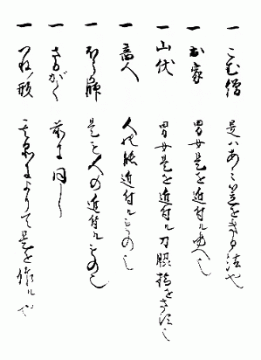
There are two problems with using historical accuracy to decide the legitimacy of modern Ninjutsu schools.
First, the only reliable historical texts that can be used to establish what Shinobi-no-jutsu was are the Shoninki, Ninpiden and Bansenshukai. This may not give a full picture of ninjutsu back then. Second, keeping to historically accurate ninjutsu training would be dangerous and may very well be illegal (i.e. explosives) today.
What does history say about ninjutsu?
Ninjutsu, or more accurately shinobi-no-jutsu, is a collection of skills relating to espionage and subterfuge. According to the three ninja texts (Shoninki, Bansenshukai and Ninpiden), real ninjutsu techniques involve infiltration, gathering information, avoiding detection and escape methods.
These are some skill sets covered by the Shoninki (read my review):
- Walking at night
- Infiltration of castles and basecamps
- Gathering information
- Disguises
- Dealing with guard dogs
- Shinobi team tactics
- Getting through physical obstacles
- Protection charms and rituals against detection
- Concealment or seeking shelter to rest
- Camouflage and misdirection
- Manipulating conversation for information
- Reading a person’s personality using facial features
- Reading behaviour and personality
The Bansenshukai itself goes into greater detail about strategies for disguises and infiltration.
The Bodyweight Basics Program
The original Shoninki was written by Natori Masatake in the 17th century; he was also the grandmaster of Kishu-Ryu Ninjutsu, a Ninjutsu school that existed back in the Edo period.
This English translation is the work of Antony Cummins and Yoshie Minami – known as True Path of the Ninja.
Is Ninjutsu a martial art?
Many people use “ninjutsu” colloquially to refer to a martial art system. However, none of the three historical ninja texts details a combat syllabus. This is confirmed by a writer at the Genbukan Tokyo Shibu (a descendant organisation of Bujinkan and Takamatsu), the Banke Shinobinoden in Spain and the Iga-ryu Museum.
Therefore, ninjutsu or shinobi-no-jutsu was not a martial art system.
However, the ninja were trained in combat.
The previous article established that ninja were mainly from the bushi-class (samurai). As a result, they were certainly trained in martial arts. The specific system they trained in depended on where they lived and what specific soldiering role they were in.
As such, shinobi-no-jutsu was a system of espionage and subterfuge that was added on to a ninja’s base martial arts.
Also, because the ninja’s occupation prioritises escape over outright combat, it is possible that their base martial art was modified for that purpose.
The historical accuracy of Bujinkan and Banke Shinobinoden
Bujinkan Historical Accuracy
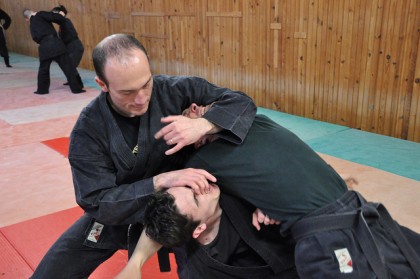
While there are Shinobi-no-jutsu techniques, the syllabus of Bujinkan predominantly centers around martial art techniques. A writer of Genbukan Tokyo Shibu has acknowledged this fact.
It is possible that Togakure-ryu (within Bujinkan) has developed a modified martial art base for its ninjutsu system. It is also possible that the Bujinkan has omitted impractical ninjutsu training with little use in today’s world.
For a compelling reconciliation between Togakure-ryu and actual shinobi-no-jutsu skills, read the thesis of the Genbukan writer I have mentioned thrice.
Banke Shinobinoden Historical Accuracy
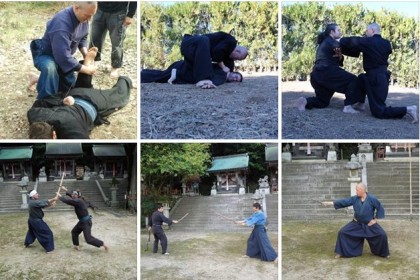
As for the Banke Shinobinoden, Kawakami himself has acknowledged that ninjutsu is not a martial art but a system of espionage and subterfuge. Having briefly looked at the syllabus, their training involves both shinobi-no-jutsu (the less controversial techniques) and martial arts.
Its ninjutsu basic training involves mudras (similar to kuji in), sharpening of the five senses, discipline and self-control (e.g. breathe control, withstanding cold, enduring shame, fasting etc.) and physical conditioning. Its martial arts syllabus includes empty-hand and weapons techniques, similar to the Bujinkan.
The legitimacy of an organisation (or school)

These are a number factors that can indicate an organisation’s legitimacy, all of which relies on the recognition of peers, organisations and publications within the industry (i.e. martial arts, self-defence and pre-modern Japanese history). It is less reliable to use the perception of the general public and non-expert news media on this matter.
Bujinkan’s Legitimacy as an organisation
There should be no question about Bujinkan being a legitimate modern martial arts organisation.
Bujinkan has been widely acknowledged by fellow martial artists from other styles. This is, in part, due to Masaaki Hatsumi’s proficiency as a martial artist and instructor, who has trained in many styles of martial art. Furthermore, he has been recognised and awarded by publications like Black Belt magazine for his dedication to teaching.
Banke Shinobinoden’s Legitimacy as an organisation
While there is too little information about Banke Shinobinoden to make a fair assessment, Jinichi Kawakami credentials as a University researcher and honorary museum director bolsters the Banke Shinobinoden’s Shinobi-no-jutsu training. His colleague, Yamada, a researcher who specialises in Japanese history at Mie University seems to regard Kawakami highly.
There are some organisations and publications (i.e. TEDx and Japan Close-Up) omitted because they are not authorities in the martial arts and historical research community.
Beware of frauds
Specific to Ninjutsu schools, be wary when you encounter dojos that claim lineage to Seiko Fujita who died choosing not to elect an heir. Take a look at Don Roley’s site where he occasionally exposes Ninjutsu frauds if you need help.
Just as any martial art, be careful when choosing the dojo you train in. Even if you choose a dojo associated either to the Bujinkan (and its descendants) or Banke Shinobinoden, it does not guarantee that the instructor is suitable. Ask for permission to watch a training session. If you ever feel unsafe, leave.
TL/DR: Where can I learn ninjutsu?
It depends on what you want. Do you want…
Historically-verified ninjutsu, accurate to history
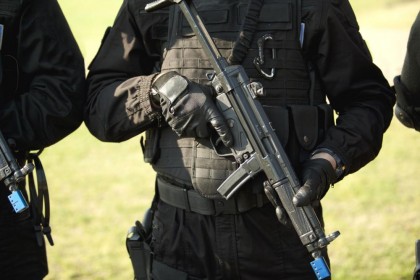
If you want to learn real ninjutsu (infiltration, disguise and sabotage) with a proven history, your search ends with nothing.
Both Bujinkan (and its descendants) and Banke Shinobinoden cannot verify historical lineage. Moreover, both organisations have omitted some dangerous practices of shinobi-no-jutsu.
You are better off joining the special forces, military intelligence division or an espionage agency.
The closest thing to historically accurate ninjutsu
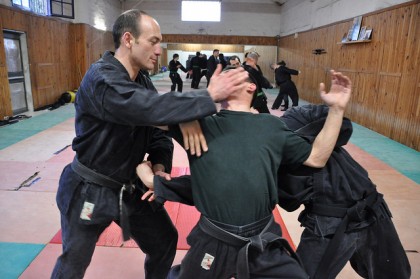
If you want alternatives that are closest to real ninjutsu (shinobi-no-jutsu), both organisations fit the bill and also include martial arts training.
However, the Banke Shinobinoden seems to have a higher emphasis on shinobi-no-jutsu when compared to the Bujinkan. Bujinkan’s predominant focus is on martial art training, which I believe is their conduit to learning the ninjutsu mindset and techniques.
As for martial arts training, Bujinkan seems to be better recognised by its peers and industry authorities.
Weigh the pros and cons, and decide whichever school you believe to be suitable.
Modern practical use of ninjutsu-inspired knowledge
If you are just inspired by the ninja and want to use their knowledge in regular life, you have more options. Here’s how you can become the best ninja-inspired version of yourself.

So, take your pick.




